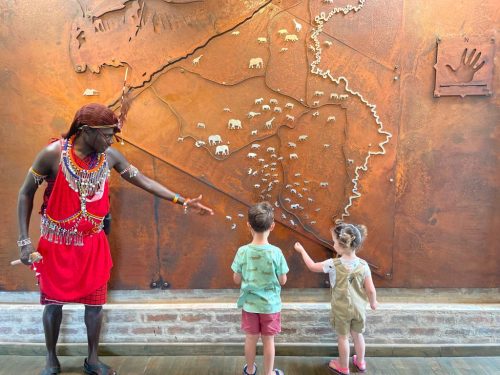
Like pretty much everyone else I know, the time of Covid is a blur and I forget exactly when this crazy idea of building a Map Room at Angama Mara was conceived. What I do remember precisely is why I thought it would be a good idea. Anyone remember the 1969 movie ‘If It's Tuesday, This Must Be Belgium’? This is pretty much how our guests arrive at Angama — if it’s Tuesday, it must be the Mara. When asked where they have been and where they are headed, our guests get that glazed look of ‘I should know but I actually have no clue’. It’s a common affliction caused by safari-boot-camp.
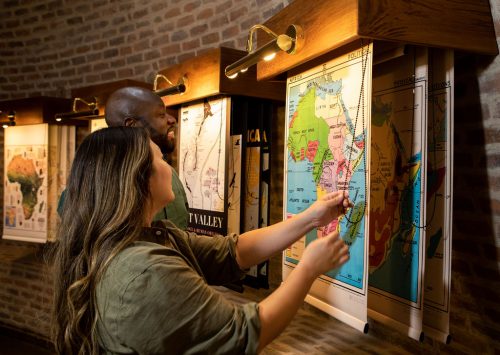
A map of where exactly they were was direly needed. A big map. An extraordinarily handsome map. We tend not to do much by half measures at Angama. My immediate plan was for my old friend Alison Bannister to easily whip up a 3D map of the Mara Triangle which would take pride of place in a smallish room and around which guests could wander admiring the topographic beauty of where they would be spending their safari days. Ali, the mother of Adam, who for the past four years has led our photography initiatives at Angama, is also mother to Simon Max Bannister, an acclaimed wildlife sculptor born in Africa but lives on the far side of the world in New Zealand.
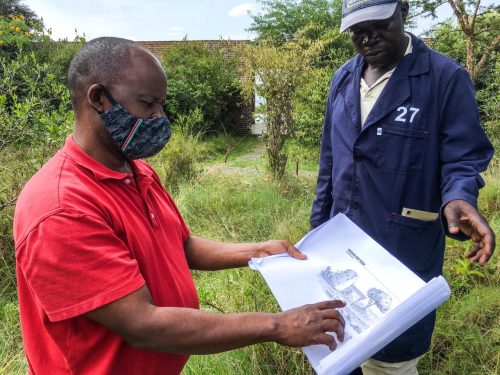


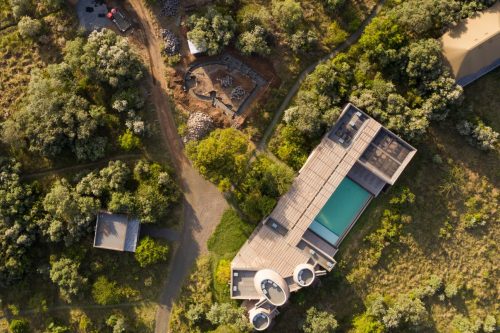
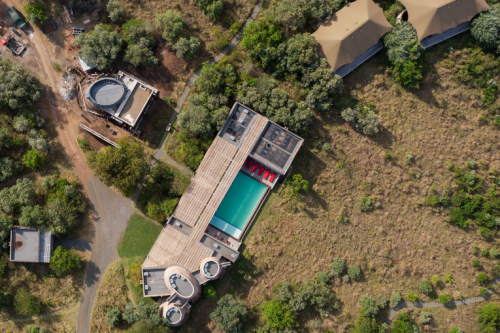
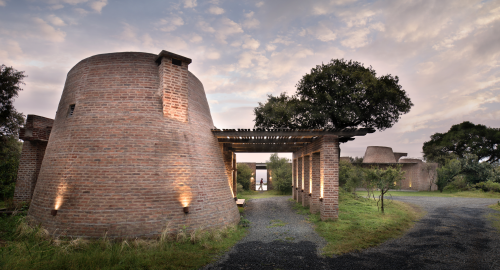
Ali wisely insourced this project to Simon and this resulted in the following: Simon would design the map and fly to the Mara to ‘sculpt’ and install the map; as a much larger space was needed, architects Sandy and Dan in Seattle were enlisted; and so the Map Room was becoming a reality. That was until Covid scotched our plans. Simon was locked up in New Zealand whose PM wasn’t going to share the keys for months, if not years to come. Without skipping a beat, Plan B was underway.
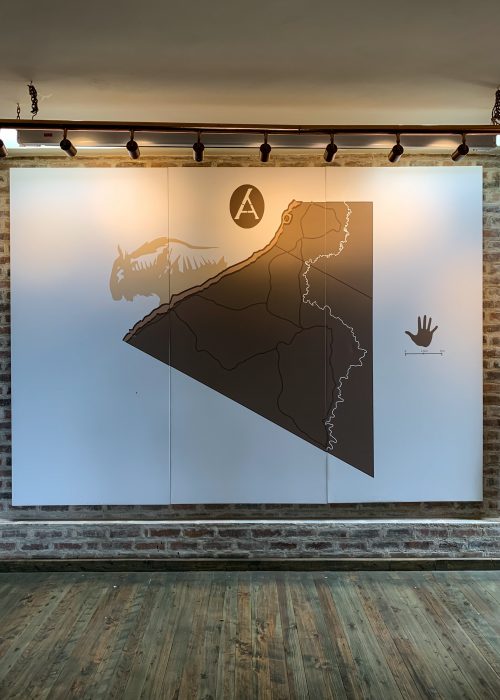
I asked Simon for his memories of this: The installation was created by a combination of research done on the ground, graphic design illustration, skilled steel craftsmanship and some heavy lifting. Using information collated by the rangers, a rough survey was done to point out sites of interest, the main boundaries of the reserve, basic roads and access points that guests might find useful. I drew the original linework illustration which was then sent to Jan Allan in Nairobi.
(Our readers will know Jan, 'King of Canvas', creator of Angama Safari Camp and architect for our soon-to-be Angama Amboseli.)

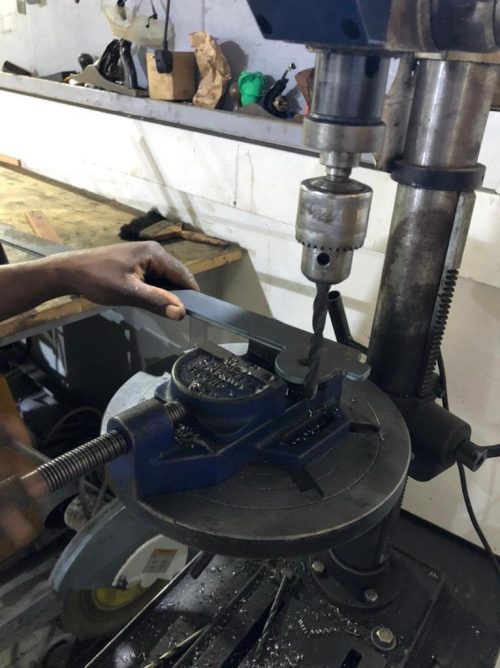
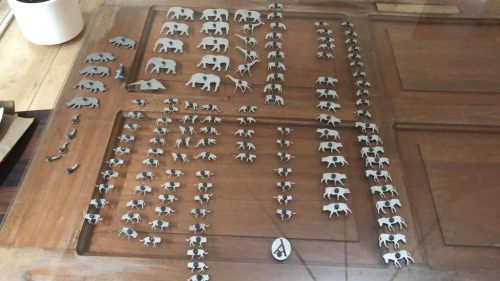
Over the next few weeks, the map was cut and assembled in layers to build up the complex image. The iconic animals were delicately laser-cut and attached with magnets so they could be moved to locations where they had been recently seen to give the map an interactive element. All the shapes were placed to orientate with the enigmatic winding Mara River. The vision was to contrast the reflective nature of the glinting Mara River in stainless steel whilst leaving the organic landscape as a mix of rusted steel textures. All went to plan, however, at the final stage of the installation, it became apparent the map was too big to fit through the large doors. Thoughtfully though, Jan had considered this possibility and it was able to come apart into smaller pieces and be reassembled inside where it hangs today and, hopefully, for always.
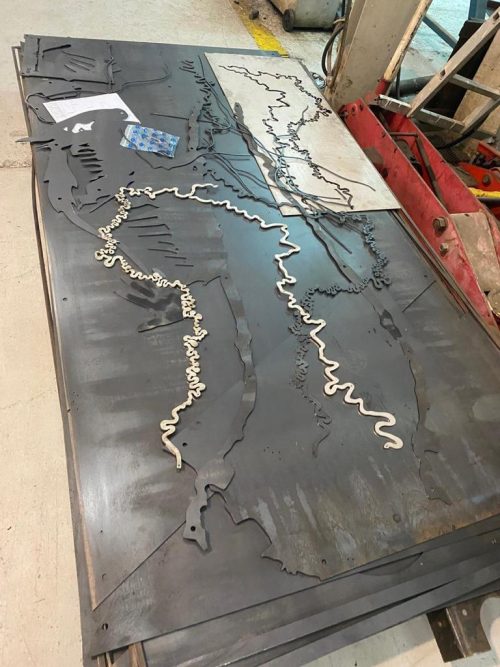
In Jan’s words: The biggest challenge was figuring out how to make the map in sections so that it could be fully prefabricated and have all the finishes applied in Nairobi before taking it to the Mara. The map fully assembled weighs about 450kg and working out how to install it without any heavy equipment was a challenge but resolved by adding a hidden frame to the back of the map with a hidden lip on the bottom. This enabled us to install the frame first and then bolt on lighter sections of the map one at a time.

This next challenge was how to transport it. We ended up custom-making a steel carrier to fit in the back of the truck (with the carrier itself weighing 250kg and designed not to bend under the weight of the fully assembled map during transport) so that the map could be sent to the Mara fully assembled. This meant that parts would be less prone to damage during transport. The map was then disassembled on arrival in the Mara and then reassembled onto the wall in the Map Room.
As the saying goes, ‘nothing is impossible to a willing heart’, and in this case, a collective of willing hearts. Thank you, Simon and Jan — our guests now know exactly where they are.
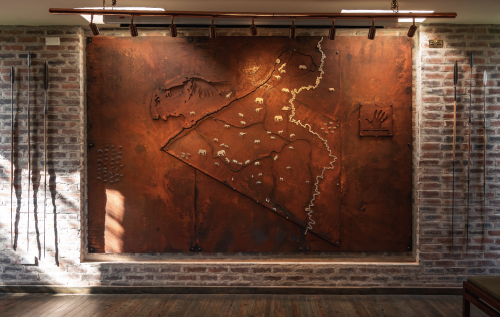
Filed under: Inside Angama
Subscribe for Weekly Stories
Comments (1):
12 June 2022
What a huge project that was but so well worth it! It’s beautiful and enhances not only the map room but also the guest experience! X

Rates & Availability